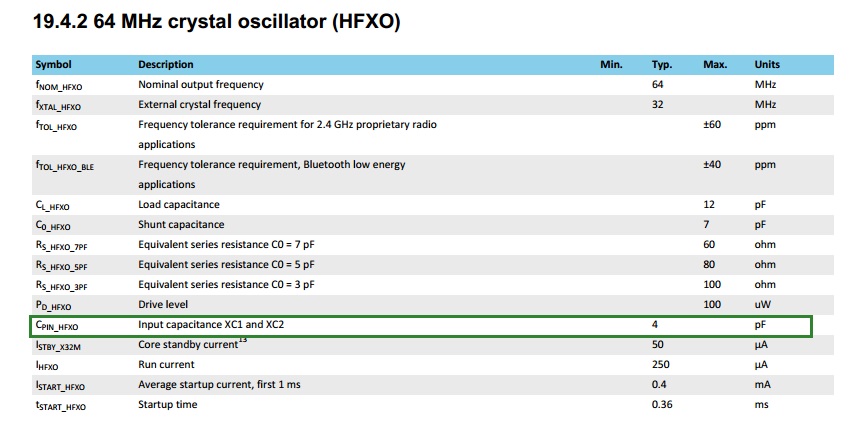Hello:
From the nrf52832 data sheet can be seen in the crystal pin is the internal input capacitance, in the table (19.4.2 64 MHz crystal oscillator (HFXO))on P109 , has pointed out the value of the capacitor is 4pF.So , this value is a pin capacitance value or 2 pin sum is 4pF, because when the choice of crystal external matching capacitor need this parameter.
TKS!



